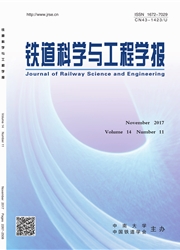

 中文摘要:
中文摘要:
基于全物理坐标法的ANSYS有限元模型,对中渡桥施工阶段颤振稳定性进行分析,分别研究对称与不对称施工、不同初始风攻角、结构阻尼等因素对施工阶段颤振稳定性的影响。研究结果表明:不对称施工顺序更有利于施工阶段的颤振稳定性;初始风攻角为-3°时有利于颤振稳定性,而+3°时最为不利;结构阻尼对颤振稳定性影响较大,特别是早期施工阶段尤为显著,可明显改善大跨度悬索桥施工阶段颤振稳定性。分析方法可为桥梁设计和研究人员提供参考。
 英文摘要:
英文摘要:
The characteristics of flutter stability during construction are influenced by many factors such as the sequence of deck erection.In this paper,numerical flutter stability analyses were performed for the construction process of the Zhongdu Bridge over Yangtze River with ANSYS FE model based on physical coordinates method. Therein,the effect of structural damping,the initial wind attack angle,and the sequence of deck erection were discussed in detail.It is found that the non-symmetrical sequence deck erection is aerodynamically favourable for the deck erection for long-span suspension bridges.As for the initial wind attack angle,it is beneficial to flutter stability with -3°,while unfavorable with +3°.Meanwhile,structural damping has a great impact on flutter stability,particularly obvious during the early construction stage.This analysis method with ANSYS could afford reference to bridge designers.
 同期刊论文项目
同期刊论文项目
 同项目期刊论文
同项目期刊论文
 期刊信息
期刊信息
